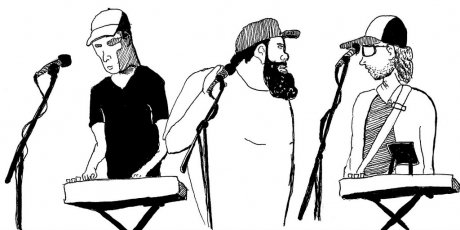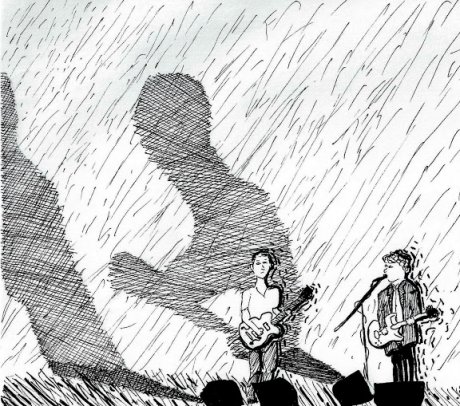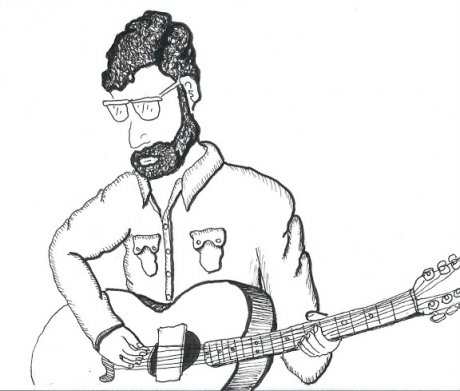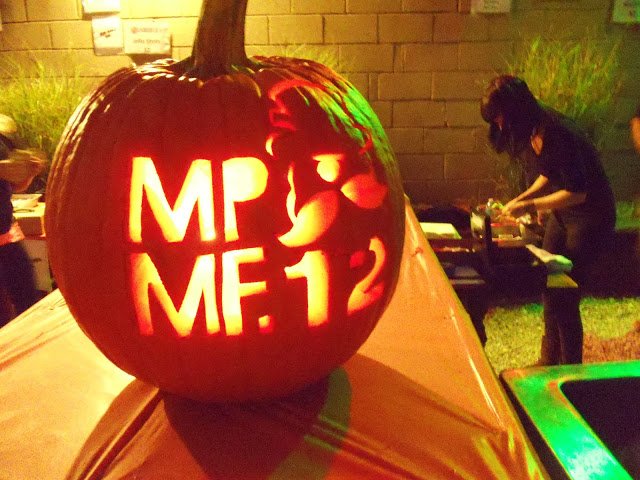I didn’t grow up in Cincinnati, but I have lived here several years now, and I feel, over time, I’ve become something of an apologist for the city. While it has the feel of rust-belt industrial decline typified by Great Lakes cities like Cleveland and Detroit, it never had a manufacturing or automotive industry crash. Flight from the urban core to the suburbs has been the city’s trouble, and this retreat left the inner city an economically depressed hotspot for crime (the downtown neighborhood of Over-The-Rhine is consistently assessed as one of America’s most dangerous). The situation deteriorated to such a degree that, at one time, Cincinnati seemed in danger of lapsing from a cohesive, unified city to a vast network of dissociated suburbs surrounding a rotting urban shell.
Concerned Cincinnati residents and urban planners have worked to reverse this trend for years, and millions of dollars have been poured into downtown development. Young professionals and recent college graduates — many from the University of Cincinnati’s architecture, design, music, and arts schools — have been a huge part of this renaissance. These groups are conspiring to take advantage of Cincinnati’s relatively cheap urban property values to create a mid-size yuppie paradise à la Austin, Texas — complete with tiny design firms, independent art galleries, and food trucks galore. It helps that the existing downtown framework includes a beautiful, nationally recognized collection of miraculously preserved historic German and Italianate architecture.
This effort to achieve a chic urban arts mecca is typified with the annual three-day concert event known as MidPoint Music Festival. In the spirit of South by Southwest, the festival has its own four-letter acronym (MPMF), eschews the outdoor field-style atmosphere in favor of a series of showcases at bars and parks throughout downtown, and works to include local artists and innovators in the celebration. Over the past 10 years, it’s grown from a small showcase of local and regional bands to a huge city event attracting the nation’s hottest artists. The festival and the city still have a long way to go, but every year that MPMF succeeds in attracting bigger name artists and luring out larger audiences, Cincinnati seems a little more like a “real city.”
THURSDAY
 Stepdad, an up-and-coming group from Grand Rapids, MI who wear hats
Stepdad, an up-and-coming group from Grand Rapids, MI who wear hats
I started Thursday night with a blast from the past: Dressy Bessy. Holy shit, who knew these guys were still around? There’s something about their name, their funky lyrics, and the sounds of power chords constantly being down-strummed that remind me of blasting the stereo in my shitty car in high school. These guys haven’t released a record since 2008 (though they still gig periodically around their home city of Denver), but I guess they thought they’d pick up a few bucks piling in a van and hitting the road this year — who knows? The set was fun while it lasted, but I couldn’t decide whether lead singer Tammy Ealom’s 1960s-style dress, bob, and knee-high socks were chic or sad at this point.
Next, I ran down to Cincinnati’s Contemporary Arts Center to check out a group I’ve been excited about ever since I heard their name a few months ago: Stagnant Pools. Although their moniker would lead you to believe they make angry, caustic synthesizer drone music, these boys are much too polite for that. They’re sweater-wearing brothers from Bloomington, Ind., who make noisy guitar-and-drum rock in the style of No Age mixed with healthy doses of shoegaze and a Joy Division-style dark sheen. They’re a solid duo, but I wish they had chosen to mix in a little variation. I felt like I “got it” about 10 minutes in and headed out about halfway through.
I got to the stage at Grammer’s, a Cincinnati bar that served as one of the central locations for MPMF because its large parking lot allowed for a huge tented outdoor stage, just in time to see Brooklyn’s own Hospitality play their last song and leave the stage. I may have missed the lion’s share of their set, but the single song I caught managed to fill me with nearly all the twee I could handle. Best Coast took the stage soon after, and they surprised me by turning in perhaps the best performance of the festival.
When I interviewed Bethany Cosentino two years ago, she got a little irritated with me when I mentioned I felt Crazy For You had a hazy, reverb-y, fuzzy sound. In their live show, much like on their sophomore album The Only Place, Best Coast have sharpened their sound to a refined edge. They do one thing — catchy surf-rock love songs with twinges of country-flavored yearning — but they do it well. Even the few songs that came out flat on The Only Place sounded razor-sharp live. If they keep this level of professionalism up, they may manage to completely kick that pesky ‘blog-buzz-band’ label. They may even come down the other side of the artistic mountain and get so good at doing one thing they become the surf-pop Silkworm.
I finished out the night at the Emery Theatre, a 101-year-old concert hall opened up specially for this festival after sitting unused for more than a decade. Paint was peeling and the chairs smelled musty, but the Dirty Projectors’ heady, polyphonic sound delighted the crowd and created a special, almost precious atmosphere. I eventually tore myself away and ended up in a tiny bar dancing to Stepdad, an up-and-coming group from Grand Rapids, MI, who galvanized the late-night party spirit in the place with their dance-synth assault.
FRIDAY
 The Antlers come alive!
The Antlers come alive!
The evening started for me with a performance by Unknown Mortal Orchestra, who were solid but unremarkable. The real reason I went to see them was to witness the grand view at the Washington Square Park stage everyone had raved about the previous evening. The park is a recent target of the aforementioned urban development rebirth, with a drastic green-space expansion and general facelift of the entire grounds. Festival organizers positioned the open-air stage in the park so the illuminated Venetian Gothic facade of Cincinnati’s 134-year-old Music Hall across the street perfectly framed the artists, creating a lovely visual backdrop.
While the results were breathtaking, I skipped out on the park after the set change because I still don’t have any interest in Grizzly Bear’s music (unpopular opinion). Instead, I managed to make it to the next venue with enough time to catch almost all of Purling Hiss‘ set.
I’m glad I did. The Philadelphia guitar wailers have often sounded muddy and messy on their recordings, but this night rivaled Best Coast in terms of their ability to ‘clean it up’ for a live show. Playing in time and turning the gain on their amps down just a little bit suits them well, and they ripped out a set of melodically infectious, albeit ragged, guitar rock with only the occasional freak-out solo. I could definitely hear the influence of headliners Dinosaur Jr. in their sound, but they managed to create a sonic blend all their own. They played like three guys who were excited to be playing their instruments together, which was refreshing.
Afterward, the dynamic/dysfunctional trio of J Mascis, Lou Barlow, and Murph took the stage. No, they did not make eye contact — but who cares? After all these years, it’s not important whether Mascis and Barlow are ever to grab a beer together; the way they can absolutely decimate an audience with volume is.
Dinosaur Jr. trotted out songs from across their catalog, playing new cuts off I Bet On Sky, hits like “Freak Scene” and “Feel the Pain,” and even pulling a dusty old Deep Wound song out of the vaults. They did, at times, seemed almost too at-home slamming away at their instruments. Maybe they were bored, maybe they were tired, maybe they’ve just played these songs a lot. Even if they are such rock gods that their second gear is any other group’s fifth gear, I’d be nice to see them push themselves past the comfort zone. Maybe at this point they’re just not that kind of band.
Perhaps the most honest fun I had at MPMF was spending time between sets killing time at the Midpoint Midway, a packed assembly of food trucks, tractor trailers, and a concert stage assembled on Cincinnati’s 12th Street. Bands were constantly playing on this stage, and festival goers were free to peruse improvised installations including poster showcases, technology presentations, a video projection motion-capture dance party, and a free arcade game collection featuring such classics as Teenage Mutant Ninja Turtles, the Arcade Game and NBA Jam. Definitely a highlight.
The rest of my night was consumed by The Antlers, who could be equal parts dramatically engaging and prosaic, and Nashville’s PUJOL, who combated the audience’s fatigue (I was feeling it myself) with brash guitar rock punctuated by childish stage banter and lyrics about Batman and reverse vampires, whatever the fuck they are. At this point, I was exhausted and half-drunk and ready to accept anything. PUJOL knocked me down when I was weak.
SATURDAY
 Something very, very strange in these old Woods
Something very, very strange in these old Woods
Saturday evening started gently with a performance by The Guitars, a local Cincinnati group that makes 1960s soul-flavored pop with blasts of horn and guitar-solo flair. Think The Ventures mixed with early Stevie Wonder. Similarly, Woods brightened up the Grammer’s tent with their sunny art-folk. They come from drastically different cities, but these two groups excel at making you feel fucking good about yourself and your life. I felt like a stoned panda bear was giving me a hug inside of a sunbeam.
The Walkmen didn’t necessarily carry on the effervescent warm vibes, but they were devastatingly effective. Some folks around me said they looked a bit tired, that they had heard this band churn similarly through all these songs before. But underneath the Grammer’s tent, with their shadows projected in triplicate on the cloth wall behind them and frontman Hamilton Leithauser yelping into his microphone, it was clear The Walkmen have a certain something that renders them impossible to ignore. As it happens, I’ve never seen them live before, so I was thoroughly entertained.
Toward the end of this final night, I ran into one of the main problems plaguing a music festival built around a series of individual venue showcases: capacity limits. I really wanted to see Dr. Ralph Stanley, a country/bluegrass artist known for his distinctive singing style most famously featured on the song “Oh Death” from the soundtrack to Oh Brother, Where Art Thou?, but the Emery Theatre was filled to capacity long before I got there. Similarly, I tried to get in to see Tennis perform, but the black-box stage venue at the Know Theatre was so comically packed out with fans I had no hope of getting in the door and had to throw in the towel.
These are issues common with events like SXSW and probably only prove MPMF is gaining steam as the years go on. It’s most likely a natural fact of life that as this festival attracts higher calibers of artists and larger crowds of fans, I’ll be forced to just choose a venue and camp out, rather than bounce from stage to stage as I like to do. I’m sure the festival organizers will do everything they can to keep the event feeling as open and free as possible, but these kinds of minor annoyances are signifiers that this little music-festival-that-could is slowly growing up.
